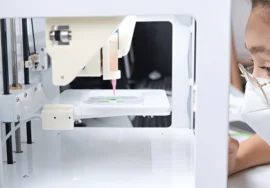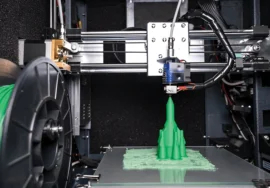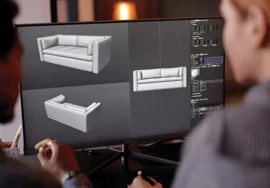
In today’s fast-paced digital age, the ability to visualize and communicate complex ideas is paramount. 3D technology has emerged as a powerful tool that revolutionizes the way we conceptualize, design, and present our visions. From architects and engineers to marketers and game developers, professionals across various industries are harnessing the power of 3D to bring their ideas to life.
Understanding the Basics of 3D Technology
Before delving into the applications of 3D, it’s essential to understand the fundamental concepts. 3D technology involves creating three-dimensional representations of objects or environments using specialized software. These representations can be static or dynamic, allowing for interactive experiences.
Key Components of 3D Technology
- 3D Modeling: This involves creating 3D models using various techniques like polygon modeling, NURBS modeling, and 3D scanning.
- 3D Rendering: This process involves generating realistic images or animations from 3D models by simulating lighting, materials, and camera angles.
- 3D Animation: This technique brings 3D models to life by creating sequences of movements and actions.
- 3D Printing: This technology enables the physical creation of 3D objects from digital designs.
The Benefits of 3D Technology
The advantages of 3D technology are far-reaching and transformative:
- Enhanced Visualization: 3D models give a comprehensive and immersive view of complex designs, making it easier to understand spatial relationships and intricate details.
- Improved Communication: 3D visuals can bridge language barriers and ease effective communication between stakeholders, regardless of their technical ability.
- Accelerated Design and Development: 3D modeling and simulation tools allow for rapid prototyping and iterative design, reducing time-to-market.
- Cost Reduction: 3D technology can reduce costs associated with physical prototypes and testing by enabling virtual simulations and analysis.
- Increased Innovation: 3D tools empower designers and engineers to explore unconventional ideas and push the boundaries of creativity.
Applications of 3D Technology
3D technology has found applications in a wide range of industries:
- Architecture and Engineering:
- Creating realistic visualizations of architectural designs
- Simulating building performance and energy efficiency
- Facilitating virtual site visits and walk-throughs
- Product Design and Manufacturing:
- Designing and prototyping products with precision
- Optimizing product ergonomics and functionality
- Streamlining manufacturing processes through 3D printing
- Entertainment and Gaming:
- Developing immersive gaming experiences
- Creating stunning visual effects for movies and TV shows
- Designing virtual reality and augmented reality applications
- Healthcare and Medical Science:
- Visualizing complex medical data and surgical procedures
- Creating personalized medical devices and prosthetics
- Training medical professionals through virtual simulations
- Marketing and Advertising:
- Creating engaging product demonstrations and commercials
- Developing interactive marketing campaigns
- Designing virtual showrooms and exhibitions
Diving Deeper into 3D Technology
To harness the potential of 3D technology, it’s crucial to understand the key techniques and tools involved:
- 3D Modeling Techniques :
- Polygon Modeling: Creating 3D models by constructing them from polygons, which are flat shapes.
- NURBS Modeling: Using mathematical curves and surfaces to create smooth and organic shapes.
- 3D Scanning: Capturing real-world objects and environments to create digital 3D models.
- 3D Rendering Techniques :
- Ray Tracing: Simulating the path of light to create realistic lighting and reflections.
- Rasterization: Converting 3D models into 2D images by projecting them onto a screen.
- 3D Animation Techniques:
- Keyframing: Animating objects by setting key-frames at specific points in time and interpolating the movement between them.
- Motion Capture: Capturing real-world movements and applying them to 3D characters.
- Procedural Animation: Generating animation automatically using algorithms and rules.
Essential 3D Software Tools
A plethora of powerful 3D software tools are available to assist in creating stunning 3D content:
- 3D Modeling: Blender, Autodesk 3ds Max, Maya, Cinema 4D
- 3D Rendering: V-Ray, Arnold, Octane Render
- 3D Animation: Adobe After Effects, Autodesk MotionBuilder, Unity
- 3D Printing: Cura, Simplify3D
Real-World Applications of 3D Technology
The impact of 3D technology is far-reaching and continues to shape various industries:
- Architecture and Construction:
- Virtual Reality (VR) and Augmented Reality (AR): Immersive experiences for clients to visualize designs.
- Building Information Modeling (BIM): Centralized digital models for efficient project management.
- 3D Printing: Creating intricate architectural components and prototypes.
- Automotive Industry:
- Design and Prototyping: Rapid prototyping and testing of vehicle designs.
- Virtual Reality Training: Immersive training simulations for engineers and technicians.
- Autonomous Vehicles: Developing and testing self-driving car technology.
- Aerospace Industry:
- Aircraft Design and Manufacturing: Optimizing aircraft aerodynamics and structural integrity.
- Virtual Reality Maintenance: Interactive maintenance training for complex aerospace systems.
- Space Exploration: Designing and simulating space missions and equipment.
- Healthcare and Medicine:
- Medical Imaging: Analyzing medical scans and visualizing patient data.
- Surgical Planning: Simulating surgical procedures to improve outcomes.
- Personalized Medicine: Creating custom medical devices and prosthetics.
- Education and Training:
- Interactive Learning: Engaging students with 3D simulations and visualizations.
- Remote Learning: Virtual classrooms and labs for distance education.
- Skill Development: Hands-on training through virtual and augmented reality experiences.
The Future of 3D Technology
As technology continues to evolve, the future of 3D holds immense potential:
- Real-Time Rendering: Creating photo-realistic images and animations in real-time.
- Artificial Intelligence and Machine Learning: Automating 3D tasks and generating intelligent content.
- Haptic Feedback: Adding tactile sensations to virtual and augmented reality experiences.
- Neuro-technology: Directly interfacing with the human brain to control and experience 3D environments.
Conclusion
3D technology has the power to transform the way we perceive, design, and interact with the world. By understanding its fundamentals and leveraging its capabilities, we can unlock a world of possibilities. As we continue to explore the frontiers of 3D, we can anticipate a future where the boundaries between the digital and physical realms blur, and our imaginations become reality.





